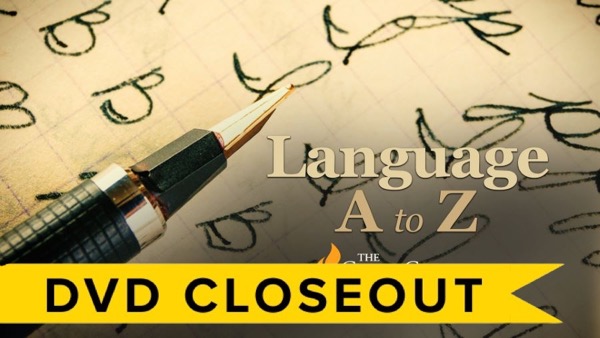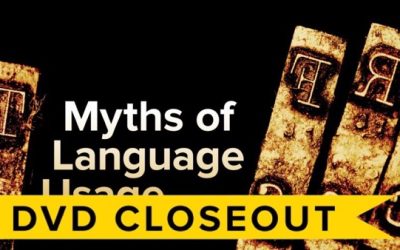🌟 New Year Offer 🌟
Celebrate 2026 with 30% OFF on all products! Use code: NEWYEAR2026. Hurry, offer ends soon!
Language A to Z’s alphabetical approach provides you with a clear and more entertaining way to probe the mysteries of language—from Aramaic and English to Maltese and French to Ket and !Xóõ—without being overwhelmed.
File Size: 5.20 GB.
John McWhorter – Language A to Z


John McWhorter, Ph.D.
Far from being a language in decline, we have reason to believe that English, with all its beauty and quirks and illogicities, will be carried far into the future.
Institution: Columbia University
Alma mater: Stanford University
Course Overview
With more than 6,000 languages spoken around the world, it’s no wonder that linguistics, the study of language, has a reputation for being complex and inaccessible. But here’s a secret: There’s a lot that’s quirky and intriguing about how human language works—and much of it is downright fun to learn about.
Every day, linguists ponder and try to solve some of the most intriguing scientific, historical, and sociological puzzles behind the inner workings of language—how it emerged, how it evolved, how it’s used, and where it’s going in the future.
- What’s the deal with slang like “baby mama” and “LOL”— where does it come from and can it actually be OK to use?
- Why don’t English speakers use words like “thou” and “thee” anymore?
- What makes “mama” and “papa” the first words spoken by children in many languages?
These and other curious questions (and their surprising answers) are all part of what makes linguistics a field of study that’s anything but dry and dull. But with so many languages and so many potential avenues of exploration, it can often seem daunting to try to understand it. Where does one even start?
Look no further than Language A to Z, in which acclaimed linguist and celebrated Great Courses professor John McWhorter of Columbia University creates a delightful way to get accessible, bite-sized introductions to language. These twenty-four 15-minute lectures by one of the best-known popularizers of language use the English alphabet as a unique, offbeat way to let you hopscotch through some of the field’s major topics, hot-button issues, curious factoids, and more. Filled with humor, whimsy, and no shortage of insights, this course is a fast-paced tour of the same territory linguists tread each and every day.
An Entertaining Way to Probe Linguistic Mysteries
Language, according to Professor McWhorter, is a highly diverse subject, covering so many areas of inquiry that one can easily become confused. But Language A to Z’s alphabetical approach provides you with a clear and more entertaining way to probe the mysteries of language—from Aramaic and English to Maltese and French to Ket and !Xóõ—without being overwhelmed. In fact, you’re likely to find yourself more easily drawn into subjects you normally wouldn’t think could be so much fun.
- Vocabulary: Is the size of a language’s vocabulary truly a testament to its greatness? How do we even begin to consider which words to include and which to discard?
- Pronouns: Professor McWhorter uses the word “she” as a way to explore some of the strange aspects of the development of English pronouns, revealing just how conservative English is.
- Double negatives: A restriction on double negatives isn’t the norm outside of English; languages like French and Russian regularly employ double negatives such as “I don’t see nothing.” Where did this Standard English attitude toward double negatives come from?
- Slang: Is there more slang today than in the past? “Zoo,” “What’s up, Doc?” and “LOL” are just three of the many examples of slang usage you’ll take a closer look at while learning that slang isn’t a 20th-century development—it’s been with us for centuries.
Eye-Opening Insights from A to Z
You’ll be amazed at just how much there is to learn about language—and that much of it runs counter to what you may have been taught in school. Every lecture is packed with information that will give you a more accurate view of what people speak and why they speak it that way.
- “Eeny, meeny, miney, moe” and “Hickory, dickory, doc” are derived from the words for numbers in an early relative of Welsh, and were once used by English speakers in England for games and counting farm animals.
- The reason “like” is here to stay in common American speech has much to do with an increased sociological openness to alternative opinions and, like, an avoidance of assertiveness.
- While humans have the genetic capacity for oral language, there’s no genetic endowment for written language—just as how we aren’t genetically developed to drive, but many of us do it daily.
These lectures are all delivered in Professor McWhorter’s light-hearted yet informative teaching style, which makes Language A to Z essential for anyone looking for a welcoming window into the quirks, curiosities, and intricacies of how language works.
A master instructor who’s contributed his knowledge to dozens of media outlets, including NPR, Good Morning America, Meet the Press, and The New York Times, Professor McWhorter will constantly keep you captivated, informed, and, above all, entertained. You may even find yourself laughing out loud at some points (or rather, “LOL’ing”).
So join him for a chance to finally get some answers—some of which may surprise you, all of which will fascinate you—to the perplexing questions linguists are asked all the time.
24 Lectures
1A for Aramaic
2B for Baby Mama
3C for Compounds
4D for Double Negatives
5E for Etymology
6F for First Words
7G for Greek Alphabet
8H for Hobbits
9I for Island
10J for Jamaican
11K for Ket
12L for Like
13M for Maltese
14N for Native American English
15O for Oldsters in Cartoons
16P for Plurals, Q for Quiz
17R for R-lessness
18S for She
19T for Tone
20U for Understand
21V for Vocabulary
22W for What’s Up, Doc?
23X for !Xoo, Y for Yiddish
24Z for Zed
Course Features
- Lecture 0
- Quiz 0
- Duration 10 weeks
- Skill level All levels
- Language English
- Students 64
- Assessments Yes



